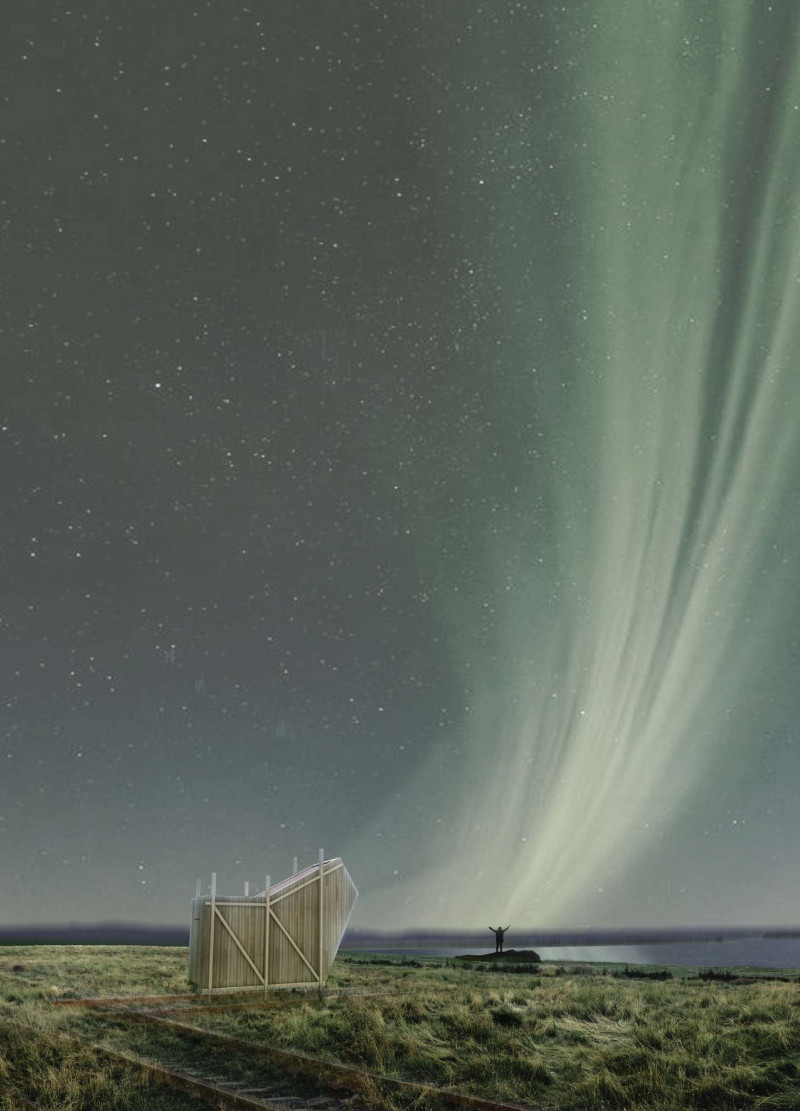5 key facts about this project
The architectural form is distinct, taking inspiration from the Viking Longhouse. This historical reference manifests in a long, linear structure that contrasts with its natural setting, embodying the concept of a "geometric body" navigating through the terrain. The project employs a multi-layered approach to design, focusing on creating spaces that foster both social interaction and personal reflection.
Innovative Design Approaches
One of the unique aspects of this project is its heavy extension concept, which emphasizes the connection to the earth. This is exemplified by the use of a sod roof that resembles the topography of the landscape, creating harmony between the structure and its environment. The design leverages local materials, such as robust stone for foundations and timber for structural elements, to enhance durability while maintaining an aesthetic coherence with the surrounding area.
The project incorporates large glass elements that provide transparency and invite natural light into communal spaces. This choice not only enhances the spatial experience but also facilitates a visual connection with the sky and landscape, blurring the boundaries between interior and exterior. Furthermore, the use of solar water heating and rainwater collection systems illustrates a commitment to sustainable practices, reinforcing the project’s alignment with environmental considerations.
Integration of Space and Functionality
The arrangement of spaces within "Ghost Ship: Earth, Sky, Memory" is purposefully designed to enhance usability and foster a sense of community. Guest pods are strategically placed across the site, allowing for a transient experience that accommodates visitors. The central longhouse serves as a communal area, featuring a hearth that acts as an inviting focal point for gatherings.
Additional features include a reflection pool and sauna, promoting wellness and encouraging introspection. The careful placement of these spaces highlights the relationship between architecture and the landscape, allowing occupants to engage with their surroundings meaningfully. The project seamlessly integrates diverse functions, balancing communal and private areas to create a cohesive living environment.
The project stands out for its ability to evoke a sense of place through architectural language while addressing contemporary needs. For a detailed exploration of its architectural plans and sections, as well as its design principles and ideas, readers are encouraged to delve further into the project presentation.


























